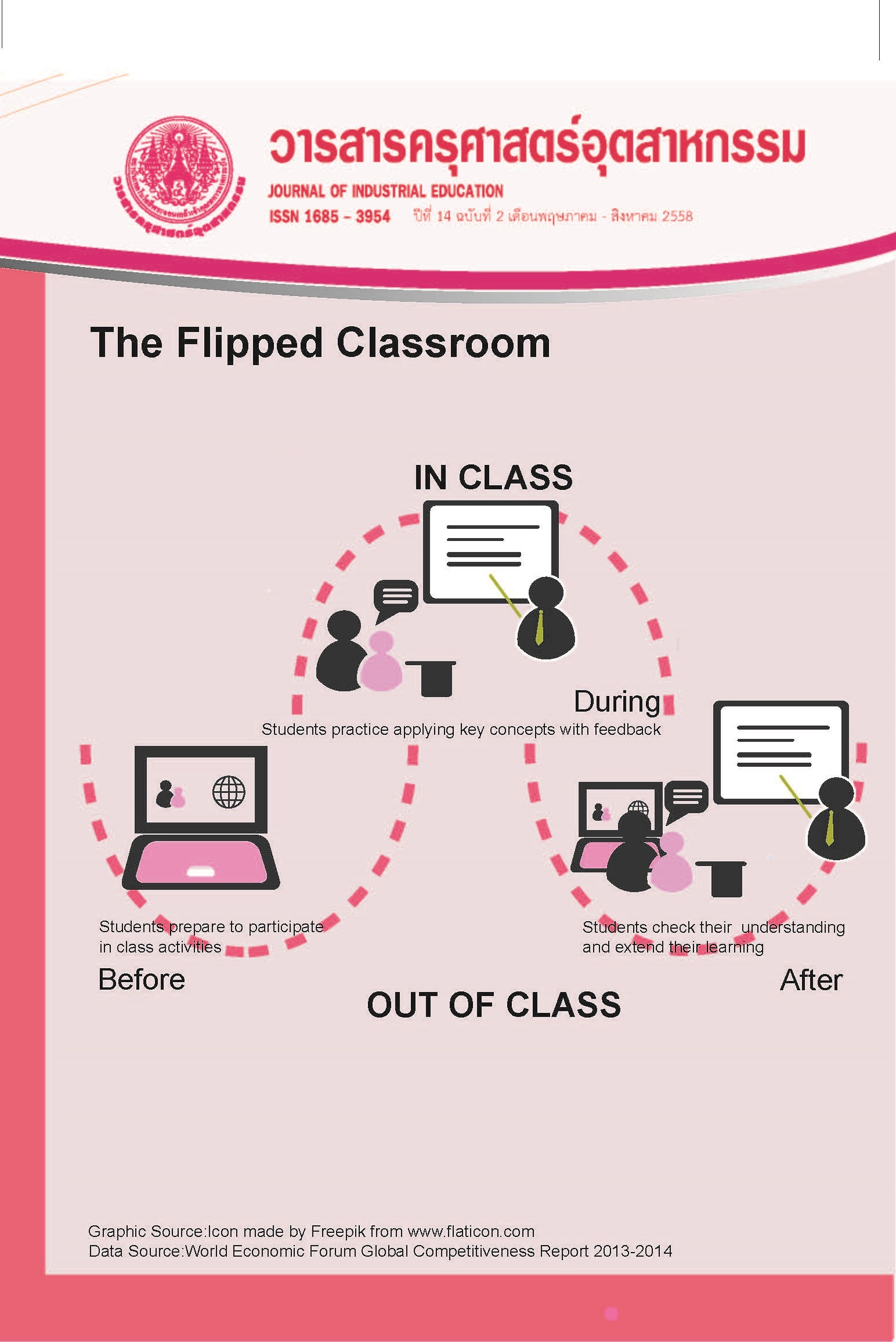Effects of Learning Activities by using Problem-based Learning (PBL) Approach in One Variable - Linear Equation for Matthayomsuksa 2
Main Article Content
Abstract
This research aimed: 1) to compare achievement in mathematics of Matthayomsuksa 2 student before receiving instruction using the problem-based learning approach on the application of linear equations with one variable, 2) to compare the achievement in mathematics of the students after receiving instruction by using the problem-based learning approach on the application of linear equations with one variable with 75 percent criteria. The population comprised 180 Matthayomsuksa 2 students of Wat Prasrimahadhat Secondary Demonstration School, Phranakhon Rajabhat University enrolled in academic year 2013. 45 sample was selected by using simple random. The tools used in this research were lesson plans and mathematics achievement tests. The collected data were accomplished on achievement test scores before and after the instructional treatment. The statistics used in data analysis were mean and standard deviation and The hypothesis testing through t-test independent sampling.
The findings showed that1) The achievement in mathematics of Matthayomsuksa 2 Students after receiving the instructional treatment by using the problem-based learning approach on the applications of linear equations with one variable was higher than before receiving the instructional treatment with statistical significance level of .05. 2)The achievement in mathematics of Matthayomsuksa 2 Students after receiving the instructional treatment by using the problem-based learning approach on the applications of linear equations with one variable was not higher than 75 percent with statistical significance level .05.
Article Details
"The opinions and contents including the words in papers are responsibility by the authors."
"ข้อคิดเห็น เนื้อหา รวมทั้งการใช้ภาษาในบทความถือเป็นความรับผิดชอบของผู้เขียน"
References
[2] วรณัน ขุนศรี. แบบรูปความสัมพันธ์และฟังก์ชัน (Pattern,Relation and Function). วารสารคณิตศาสตร์, 45(512 - 514), น.36 – 45.
[3] สำนักวิชาการและมาตรฐานการศึกษากระทรวงศึกษาธิการ. 2551. หลักสูตรแกนกลางการศึกษาขั้นพื้นฐาน 2551. กรุงเทพฯ: ชุมชนสหกรณ์การเกษตรแห่งประเทศไทยจำกัด.
[4] สถาบันทดสอบทางการศึกษาแห่งชาติ. 2555. ค่าสถิติพื้นฐานคะแนนมัธยมศึกษาปีที่ 3 ปีการศึกษา 2555. ค้นเมื่อวันที่ 3 กันยายน 2555. จาก https://www.niets. or.th/uploadfile/5/371f1b3becb7870d1eb40e3d46ef0ac.pdf
[5] ชมนาด เชื้อสุวรรณทวี. 2542. การสอนคณิตศาสตร์. กรุงเทพฯ: มหาวิทยาลัยศรีนครินทรวิโรฒประสานมิตร.
[6] จุมพต ขำวีระ. 2538. การพัฒนาชุดการสอนเพื่อพัฒนาสมรรถภาพในการแก้โจทย์ปัญหาคณิตศาสตร์ของนักเรียนประถมศึกษาปี ที่ 4. วิทยานิพนธ์ปริญญาศึกษามหาบัณฑิต สาขาวิชาการสอนคณิตศาสตร์ บัณฑิตวิทยาลัยมหาวิทยาลัยเกษตรศาสตร์.
[7] วิชัย วงษ์ใหญ่. 2542. พลังการเรียนรู้ในกระบวนทัศน์ใหม่. กรุงเทพฯ: เอสอาร์พริ้นติ้ง.
[8] รุ่ง แก้วแดง. 2543. ปฏิวัติการศึกษาไทย. พิมพ์ครั้งที่ 8. กรุงเทพฯ: มติชน.
[9] ปานวรี ยงยุทธวิชัย. 2548. การอ่าน เขียน คิดวิเคราะห์ คิดสังเคราะห์. กรุงเทพฯ: ธารอักษร.
[10] ยุพิน พิพิธกุล. 2539. การเรียนการสอนคณิตศาสตร์. กรุงเทพฯ: บพิธการพิมพ์.
[11] วาสนา ภูมี. 2555. ผลการจัดการเรียนรู้โดยใช้ปัญหาเป็นฐาน (Problem-Based Learning)เรื่อง อัตราส่วนและร้อยละ ที่มีต่อ ความสามารถในการแก้ปัญหาทางคณิตศาสตร์ และความสามารถในการให้เหตุผลทางคณิตศาสตร์ของนักเรียนชั้นมัธยมศึกษาปี ที่ 2. ปริญญานิพนธ์การศึกษามหาบัณฑิต สาขาวิชาการมัธยมศึกษา บัณฑิตวิทยาลัย มหาวิทยาลัยศรีนครินทรวิโรฒ.
[12] Barrows, Haward S. and Tamblyn, Poblyn M. 1980. Problem –Based Learning: An pproach to Medical Education.New York: Springer Publishing Company.
[13] รังสรรค์ ทองสุกนอก. 2547. ชุดการเรียนการสอนที่ใช้ปัญหาเป็นฐานในการเรียนรู้ (Problem- Based Learning) เรื่อง ทฤษฎี จำนวนเบื้องต้นของนักเรียน ชั้นมัธยมศึกษาปีที่ 4. ปริญญานิพนธ์การศึกษามหาบัณฑิต สาขาวิชาคณิตศาสตร์ บัณฑิตวิทยาลัย มหาวิทยาลัย ศรีนครินทรวิโรฒ.
[14] พวงรัตน์ ทวีรัตน์. 2539. วิธีการวิจัยทางพฤติกรรมศาสตร์และสังคมศาสตร์. พิมพ์ครั้งที่ 6. กรุงเทพฯ: บัณฑิตวิทยาลัย มหาวิทยาลัยศรีนครินทรวิโรฒ.
[15] สุนทรี คนเที่ยง. 2544. การจัดการเรียนการสอนตามแนวปฏิรูปการศึกษา. วารสารข่าวสารกองบริการการศึกษา, 12(1), น. 10 -19.
[16] Bloom, Benjamin S. 1976. Taxonomy of education objectives handbook 1 : Cognitivedomain. New York : David MacKay Company.
[17] เพ็ญศรี พิลาสันต์. 2551. การเปรียบเทียบผลสัมฤทธิ์ทางการเรียนและแรงจูงใจใฝ่สัมฤทธิ์ทางการเรียนกลุ่มสาระการเรียนรู้ คณิตศาสตร์ เรื่อง เศษส่วน ของนักเรียนชั้นประถมศึกษาปีที่ 5 ระหว่างการจัด กิจกรรมการเรียนรู้โดยใช้ปัญหาเป็นฐาน (PBL) กับการจัดกิจกรรมการเรียนรู้ตามวิธีปกติ. วิทยานิพนธ์ศึกษามหาบัณฑิต สาขาวิชาหลักสูตรและการสอน บัณฑิตวิทยาลัย มหาวิทยาลัยมหาสารคาม.
[18] Illinois Mathematics and Science and Academy. 2001. Introduction to Problem Based Learning. Retrieved May 25, 2008, from : https://pbln.imsa.edu/model/intro/index.html
[19] สุวิทย์ มูลคำและอรทัย มูลคำ. 2545. 19 วิธีจัดการเรียนรู้ : เพื่อพัฒนาความรู้และทักษะ. กรุงเทพฯ: ภาพพิมพ์.
[20] ชัยศักดิ์ ลีลาจรัสกุล. 2543. เอกสารคำสอนรายวิชา หลักสูตรและการสอนคณิตศาสตร์. โรงเรียนสาธิตมหาวิทยาลัยศรีนครินทรวิโรฒปทุมวัน.

